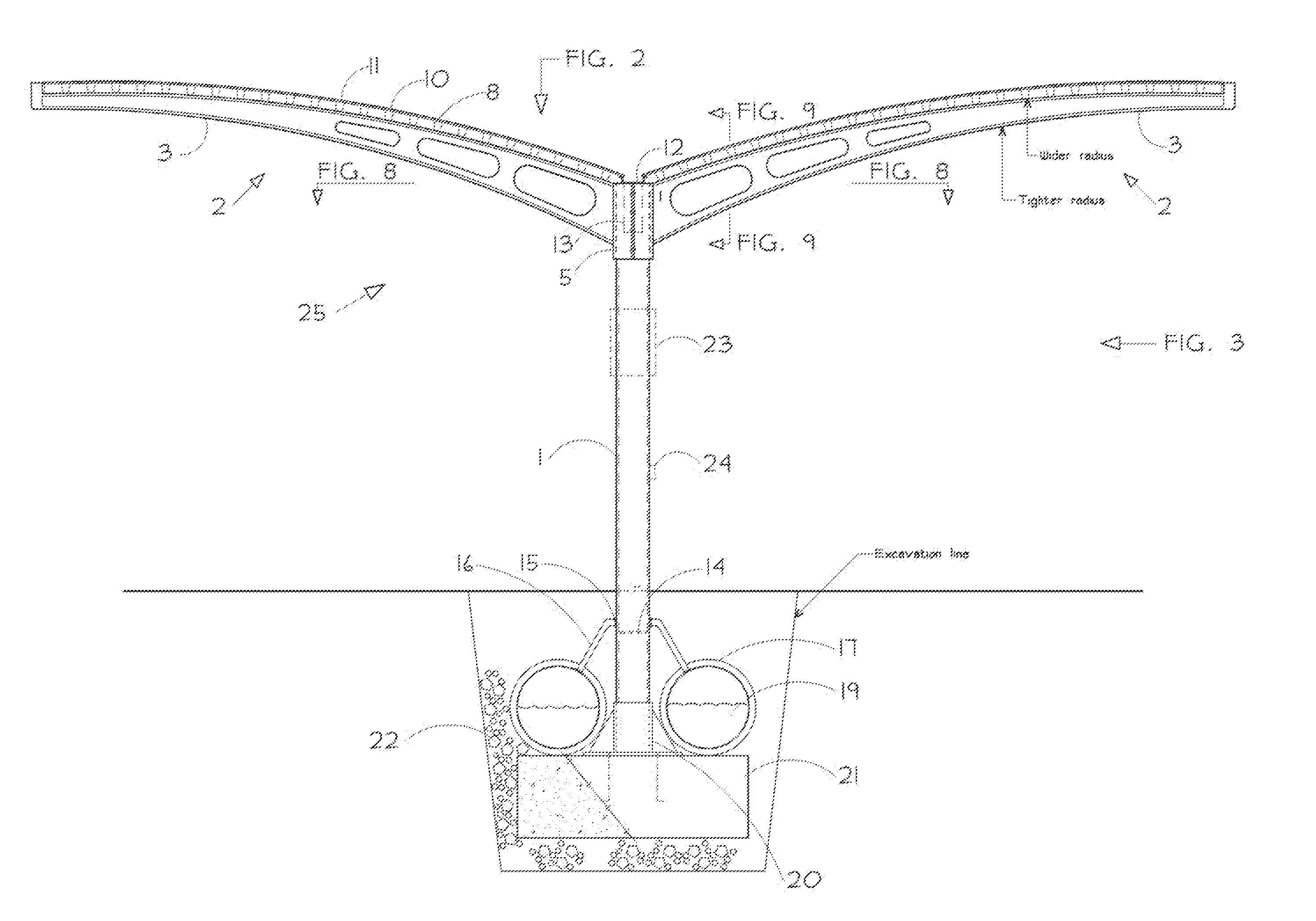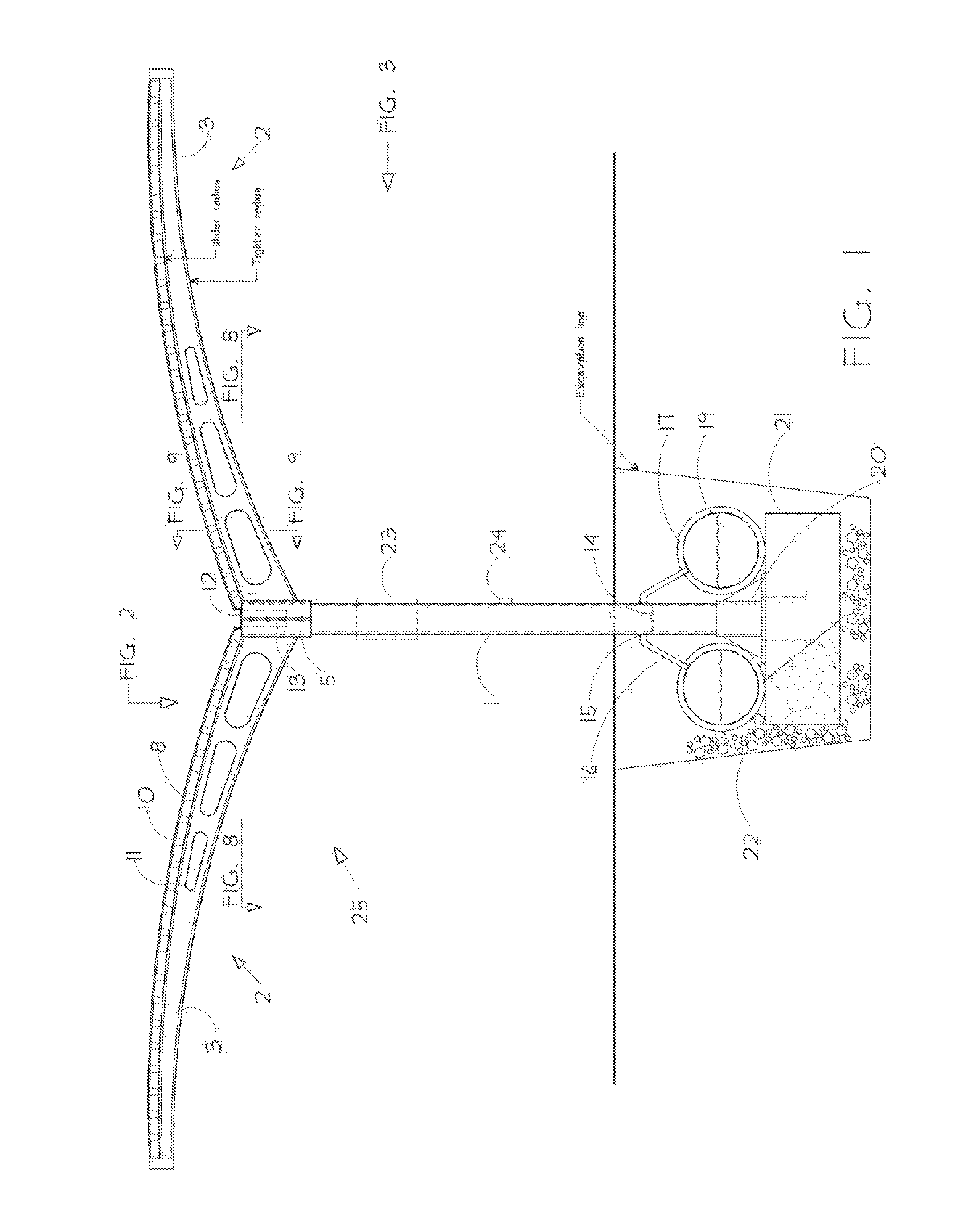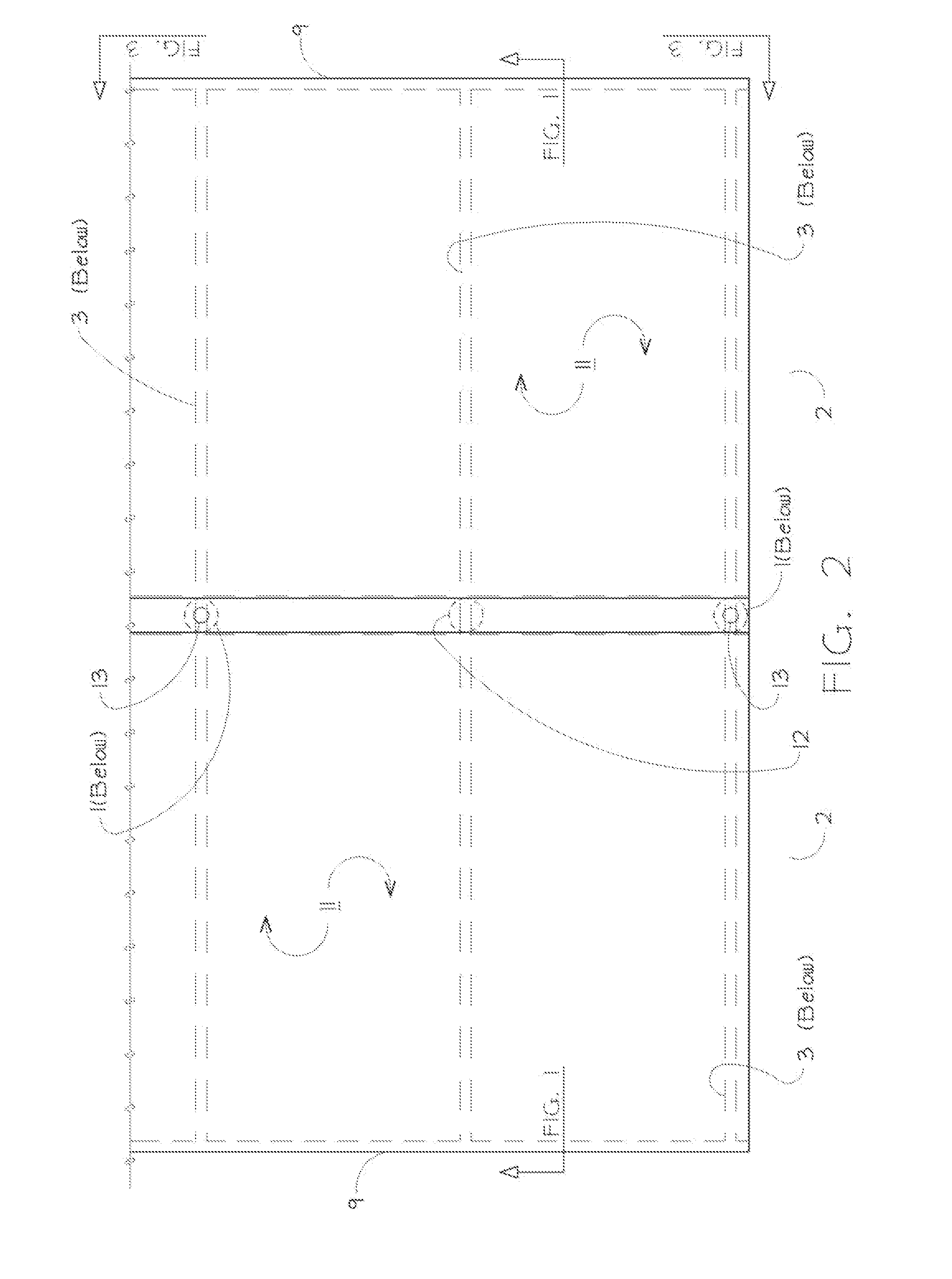Arcuate-Winged Solar Canopy Assembly
a solar canopy and arcuate technology, applied in the direction of solar heat collector mounting/support, solar heat collector safety, light and heating apparatus, etc., can solve the problems of not being ideal, rigid and expensive assembly, and maximizing the value and use of airspace, so as to facilitate the use of solar power collected, increase thickness, and maximize the effect of functionality
- Summary
- Abstract
- Description
- Claims
- Application Information
AI Technical Summary
Benefits of technology
Problems solved by technology
Method used
Image
Examples
Embodiment Construction
[0058]The solar canopy assembly disclosed herein is subject to widely varied embodiments. However, to ensure that one skilled in the art will be able to understand and, in appropriate cases, practice the present invention, certain preferred embodiments of the broader invention revealed herein are described below. Therefore, before any particular embodiment of the invention is explained in detail, it must be made clear that the following details of construction and inventive concepts are mere examples of the many possible manifestations of the invention.
[0059]FIG. 1 shows a preferred embodiment of the canopy assembly 25. In FIG. 1, canopy assembly 25 is composed of support column 1 which extends substantially vertically from below ground level to a height sufficient to permit the parking of vehicles or storage of equipment under attached wing member 2. Support columns 1 may have a cylindrical shape, although other shapes may be employed, such as, but not limited to, an open box, octo...
PUM
 Login to View More
Login to View More Abstract
Description
Claims
Application Information
 Login to View More
Login to View More - R&D
- Intellectual Property
- Life Sciences
- Materials
- Tech Scout
- Unparalleled Data Quality
- Higher Quality Content
- 60% Fewer Hallucinations
Browse by: Latest US Patents, China's latest patents, Technical Efficacy Thesaurus, Application Domain, Technology Topic, Popular Technical Reports.
© 2025 PatSnap. All rights reserved.Legal|Privacy policy|Modern Slavery Act Transparency Statement|Sitemap|About US| Contact US: help@patsnap.com



